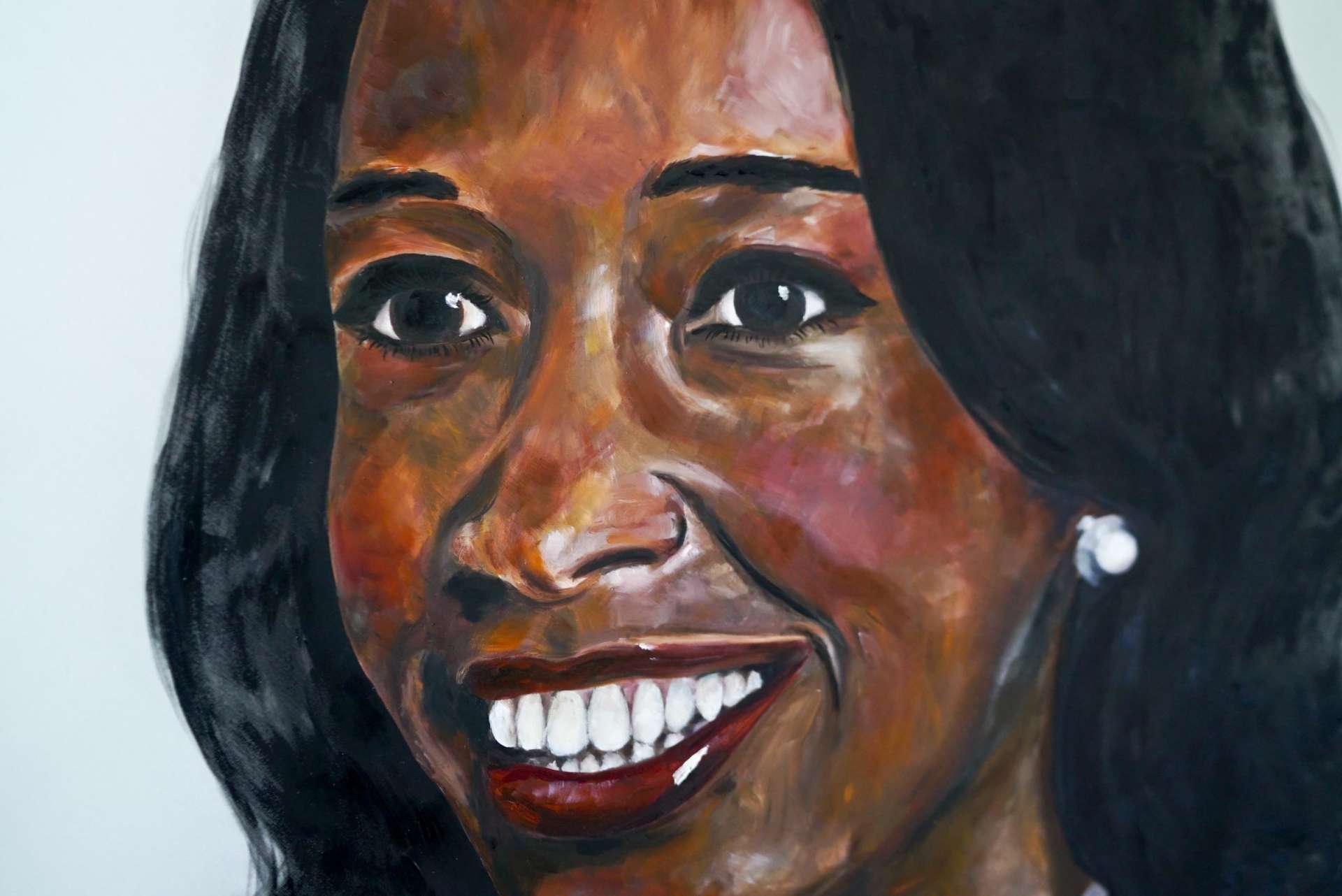
1942-2019
Patricia Bath
Did you know that eyesight is a basic human right? This was established by the American Institute for the Prevention of Blindness, co-founded in 1976 by Patricia Bath – the subject of this week’s painting.
A pioneer in the field of cataract treatment, Patricia Bath used the power of laser-technology to invent a more accurate and less painful procedure, thus leaving a legacy that spans far beyond the reaches of her field of ophthalmology. In 1988 she became the first African American woman to be awarded a patent for a medical invention and since then her invention influenced millions of people around the world.

Bio
Childhood
Bath was born in Harlem, New York, in 1942 to a father who was the first black man employed as a motorman for the New York City Subway, and a mother who kindled Patricia’s interest in the sciences by gifting her first chemistry set.
Along with her parents, she was blessed with a network of encouraging teachers and spent many of her High School years starting to explore the world of scientific research before earning a National Science Foundation scholarship. She began research into the links between stress, malnutrition and cancer and, among other things, discovered a mathematical formula that could be used to anticipate the growth of cancer cells, before she had turned eighteen.
Early study
After moving to Washington DC to study medicine, her mid twenties coincided with the Civil Rights Act in 1964 and the assassination of Martin Luther King Jnr four years later, and her subsequent work was inspired by the movement’s aim to empower all people. This work included the rallying of her fellow students at the Howard University College of Medicine to offer their health care services for free at the Poor People’s Campaign in Resurrection City.
Her work in ophthalmology – the branch of medicine diagnosing and treating eye disorders – was sparked on her return to Harlem in her late twenties, to intern at Harlem Hospital, affiliated with Columbia University. She saw a disproportionately high rate of blindness at the hospital compared with the university’s eye clinic and, seeing a great opportunity not only to treat those in need but also conduct research and experimentation in the field, convinced the professors at the university to operate on blind patients on a volunteering basis. She herself was thus a proud participant in the first eye surgery at the hospital in late 1969.
Career continued
Her career was a hugely productive combination of research, invention and humanitarian work in ophthalmology. In 1979, she published groundbreaking research, based on her observations at Harlem Hospital, showing a higher rate of blindness among the black community, and in particular the extremely high rate of glaucoma as a source of blindness in blacks.
Her humanitarian drive led to the founding of the American Institute for the Prevention of Blindness. Along with establishing sight as a basic human right, the Institute allowed Bath and her co-founders, the Nigerian-born pediatrician, Aaron Ifekwunigwe, and American psychiatrist, Alfred Cannon, to distribute free eye drops, vitamins and vaccinations to infants all around the globe. She even managed to restore the sight of a woman who had been blind for 30 years, using a process called keratoprosthesis where the cornea is removed and replaced by an artificial one.
“Believe in the power of truth. Don’t allow your mind to be imprisoned by majority thinking. Remember that the limits of science are not the limits of imagination.”
Dr Patricia Bath
LASER PHACO
About Laser phaco invention:
Her invention of ‘Laser phaco’ (or ‘laser PHotoAblative Cataract surgery’), which is a more precise and less painful cataract-removal procedure, grew out of research she was doing, first in the Parisian lab of the laser pioneer Danièle Aron-Rosa, then at the Laser Medical Center in Berlin in 1986. Her device was completed later that year and patented in 1988, when she became the first African American woman to be awarded a patent for a medical invention. It has since been used in countries all across the world to restore sight to countless numbers of people, including those who have been unable to see for decades. In 2009, she was recognised by Barack Obama for her philanthropic work in ophthalmology.
Bath’s passion and determination saw her continue her work in supporting the undersupported right to the end of her career. Just a few weeks before her death in May 2019, she testified at “Trailblazers and Lost Einsteins: Women Inventors and the Future of American Innovation”, a hearing focused on the huge gap between men and women in scientific research and invention.


